Hells Angels (film)
7.8 /10 1 Votes
76% Rotten Tomatoes Genre Drama, War Initial DVD release December 7, 2004 Language English | 7.8/10 IMDb Budget 3.95 million USD Duration Country United States | |||||||||||||||||||||||||||||||||
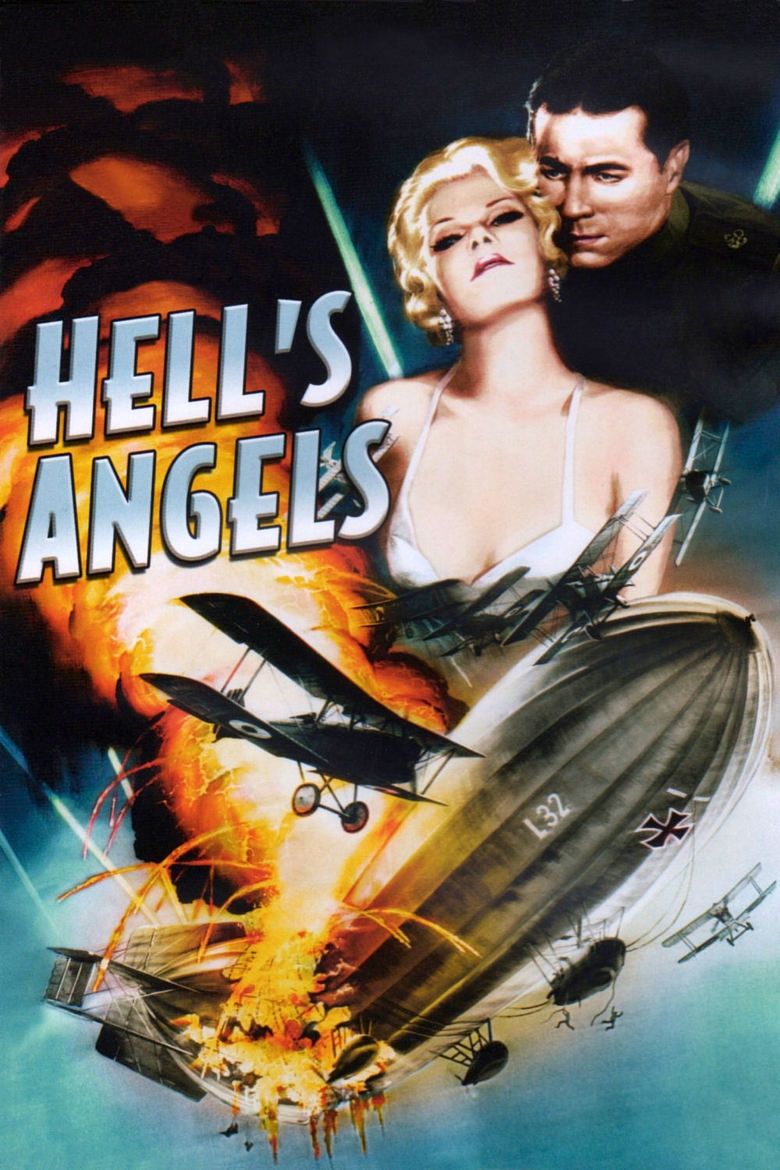 | ||||||||||||||||||||||||||||||||||
Release date November 15, 1930 (1930-11-15) Cast (Monte Rutledge), (Roy Rutledge), (Helen), (Karl Armstedt), (Baron Von Kranz), Frank Clarke (Lt. von Bruen)Similar movies Deathwatch , Sergeant York , , 1982 Malvinas, La guerra desde el aire , Hindenburg Disaster Newsreel Footage Tagline Howard Hughes' Thrilling Multi-Million Dollar Air Spectacle | ||||||||||||||||||||||||||||||||||
Hell's Angels is a 1930 independently made American epic aviation war film, directed and produced by Howard Hughes, that stars Ben Lyon, James Hall, and Jean Harlow. The film, which was written by Harry Behn and Howard Estabrook, was released by United Artists. Originally shot as a silent film, Hughes retooled Hell's Angels over a lengthy gestation period. Most of the film is in black-and-white, but there is one color sequence, the only color footage of Harlow's career.
Contents
- Hell s angels anti war scene
- Plot
- Cast
- Production
- Reception
- Impact
- Hell s angels 1930 re release trailer
- Hell s angels anjos do inferno completo legendado 1930
- References
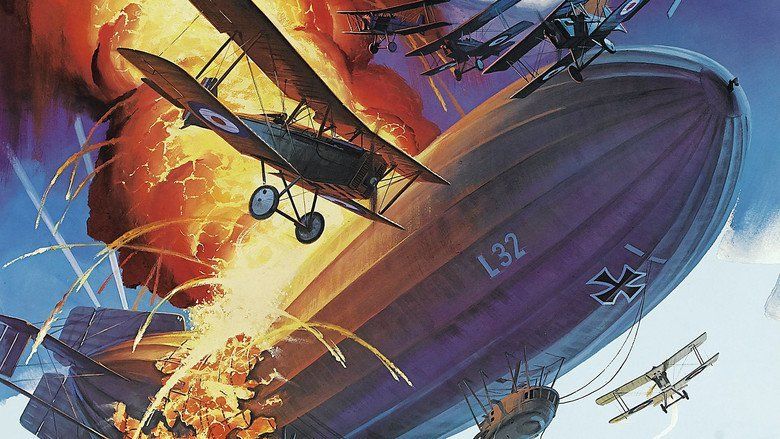
Despite its initial poor performance at the box office, the film eventually earned its production costs twice over. Controversy during the Hell's Angels production contributed to the film's notoriety, including the accidental deaths of several pilots, an inflated budget, a lawsuit against a competitor (The Dawn Patrol), and repeated postponements of the release date. Hell's Angels is now hailed as one of the screen's first sound action films.
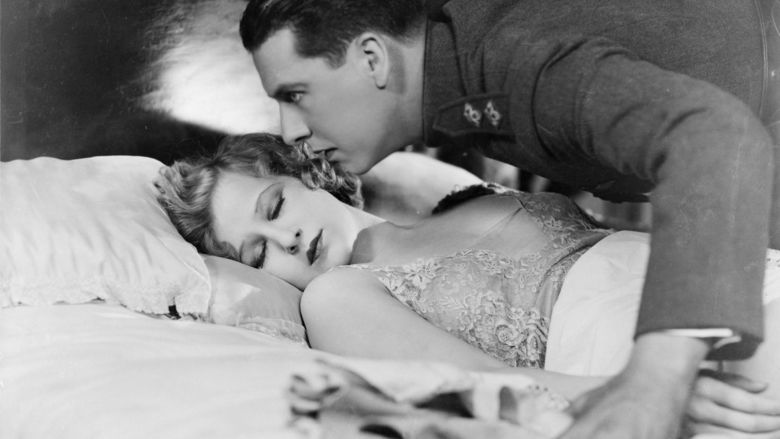
Hell s angels anti war scene
Plot
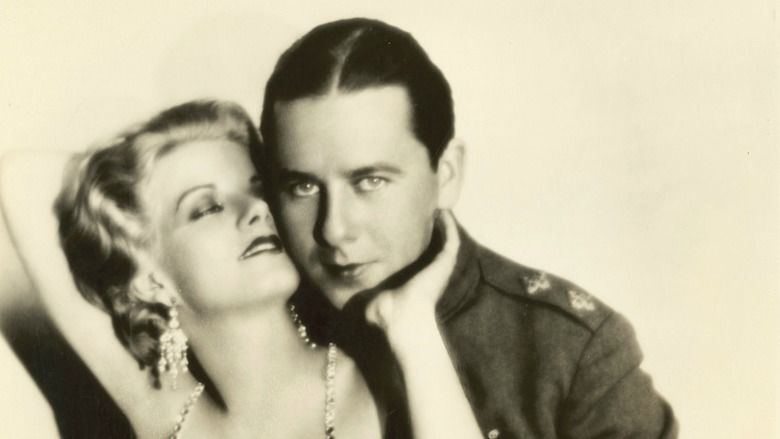
Roy (James Hall) and Monte Rutledge (Ben Lyon) are very different British brothers. Strait-laced Roy loves and idealizes the apparently demure Helen (Jean Harlow). Monte, on the other hand, is a womanizer. Their German friend and fellow Oxford student Karl (John Darrow) is against the idea of having to fight England when World War I breaks out.
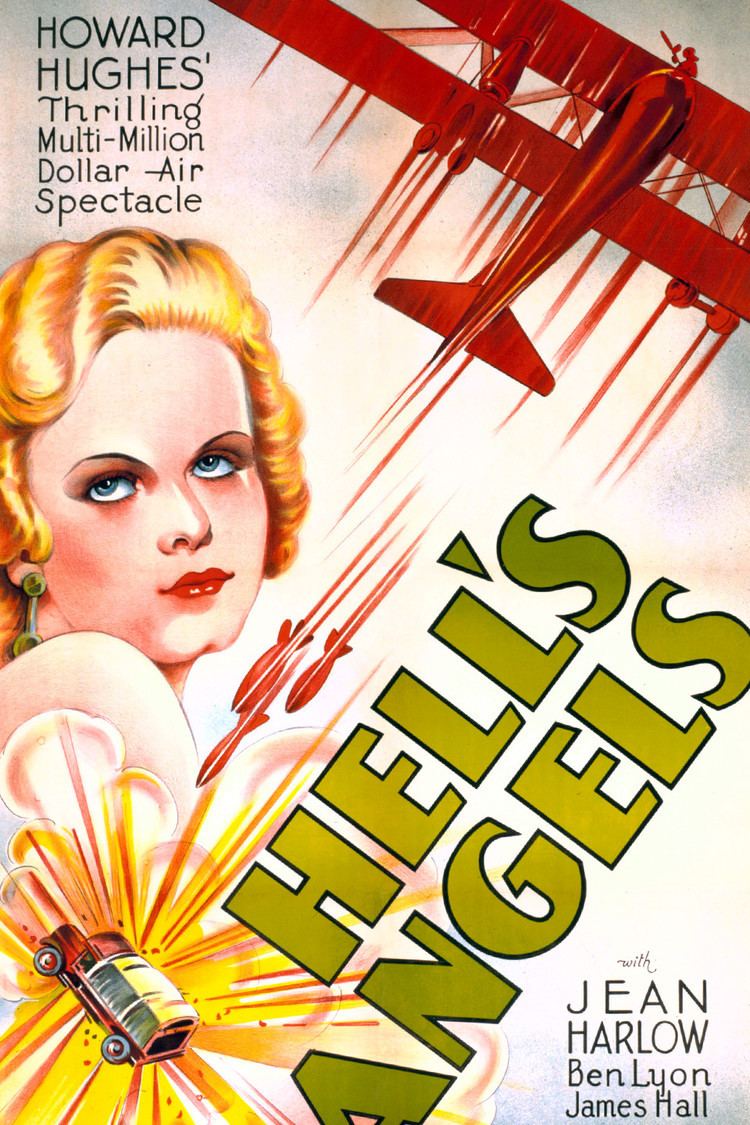
Meanwhile, the oblivious Monte is caught in the arms of a woman by her German officer husband (Lucien Prival), who insists upon a duel the next day. Monte flees that night. When Roy is mistaken for his brother, he goes ahead with the duel and is shot in the arm.

Karl is conscripted into the German Air Force, and the two British brothers enlist in the Royal Flying Corps (RFC), Monte only to get a kiss from a girl at the recruiting station.

When Roy finally introduces Monte to Helen, she invites Monte to her flat. Monte tries to rebuff her advances for his brother's sake, but gives in. The next morning, however, he is for once ashamed of himself.
Meanwhile, Karl is an officer aboard a Zeppelin airship sent to bomb Trafalgar Square, London. As the bombardier-observer, he is lowered below the clouds in a spy basket. He deliberately guides the Zeppelin over water, where the bombs have no effect. Four RFC fighters are sent to intercept the Zeppelin. Roy pilots one, with Monte as his gunner. To gain altitude more quickly, the airship commander (Carl von Haartman) orders everything possible be jettisoned. When that is not enough, he decides to sacrifice Karl by cutting the cable that secures his pod. He then accepts the advice of another officer; the officer and other crewmen obediently leap to their deaths "for Kaiser and fatherland". German machine gunners shoot down three aircraft; Roy and Monte survive a crash landing. After his machine guns jam or run out of ammunition, the last British pilot aloft dives his fighter into the dirigible, sending it crashing in a blazing fireball. The brothers narrowly avoid the debris.

Later, in France, Monte is branded a coward for shirking his duty when his replacement is shot down in his place. When a Staff Colonel asks for two volunteers for a suicide mission, Roy and Monte step up. They are to destroy a vital enemy munitions depot their squadron had tried to blow up for days. They will sneak in using a captured German bomber the next morning so that a British brigade will have a chance in their otherwise hopeless afternoon attack.
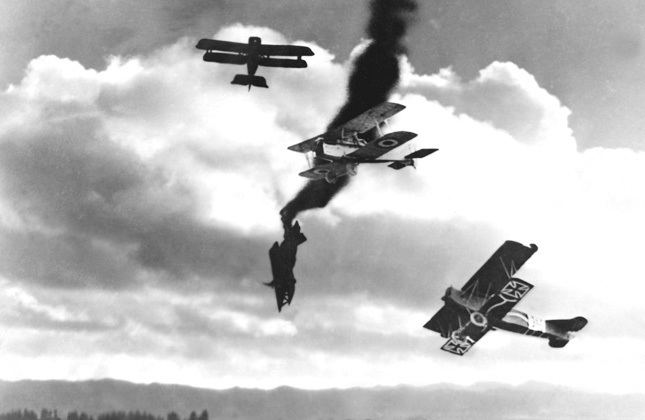
That night, Roy discovers a drunk Helen in a nightclub with Captain Redfield. When he tries to take her home, she turns on him, revealing that she never loved him, that she was, in fact, not the young innocent he believed her to be. Devastated, Roy joins Monte for some carousing. Monte decides not to go on the mission and nearly persuades Roy to do the same, but in the end, Roy drags Monte back to the airfield.
The raid on the German munitions dump is successful. However, they are spotted in the act by a flight of German fighters from the Flying Circus, led by Manfred von Richthofen. Monte defends the bomber with a machine gun until their squadron arrives, and a dogfight breaks out. Their buddy "Baldy" shoots down the one German who is still targeting the bomber, but then von Richthofen swoops in and shoots the brothers down. They are captured.
They are given the option of talking or facing a firing squad by none other than Roy's old dueling opponent. Monte decides to save his life. Unable to change his brother's mind, Roy convinces Monte that he should speak with the German general alone. He offers to tell what he knows on condition that there is no witness to his treason. The general is persuaded to give him a pistol (with one bullet) to kill Monte. Roy fails to get Monte to do the right thing, and has no choice but to shoot his brother in the back. Afterward, Roy is executed. The British attack gets off to a successful start.
Cast
(in order of film credits)
Production
Hell's Angels had been originally conceived as a silent, with James Hall and Ben Lyon as Roy and Monte Rutledge, and Norwegian silent film star Greta Nissen cast as Helen, the female lead, and was to be directed by Marshall Neilan. Principal photography began on October 31, 1927 with interiors shot at the Metropolitan Studio in Hollywood. A few weeks into production, however, Hughes' overbearing production techniques forced Neilan to quit. Hughes first hired Luther Reed, on loan from Paramount but still was in conflict over directing roles before hiring a more pliable director, Edmund Goulding, but took over the directing reins when it came to the frenetic aerial battle scenes.
Midway through production, the advent of the sound motion picture came with the arrival of The Jazz Singer. Hughes incorporated the new technology into the half-finished film, but Greta Nissen became the first casualty of the sound age, due to her pronounced Norwegian accent. He paid her for her work and cooperation, and replaced her, because her accent would make her role as a British aristocrat ludicrous. The role was soon filled with a teenage up-and-coming star found by Hall in a review, and hired by Hughes himself, Jean Harlow.
When Hughes made the decision to turn Hell's Angels into a talkie, he hired a then-unknown James Whale, who had just arrived in Hollywood following a successful turn directing the play Journey's End in London and on Broadway, to direct the talking sequences; it was Whale's film debut, and arguably prepared him for the later success he would have with the feature version of Journey's End, Waterloo Bridge, and, most famously, the 1931 version of Frankenstein. Unhappy with the script, Whale brought in Joseph Moncure March to re-write it. Hughes later gave March the Luger pistol used in the famous execution scene near the film's ending.
One talking scene filmed in Multicolor but printed by Technicolor, provides the only color film footage of Jean Harlow. (Multicolor was not prepared to print the number of inserts needed for the wide release Hughes wanted.) The inexperienced actress, just 18 years old at the time she was cast, required a great deal of attention from Whale, who shut down production for three days while he worked Harlow through her scenes.
During principal photography, Hughes, along with pilot Harry Parry, designed many of the aerial stunts for the dogfighting scenes. Pioneering aerial cinematographer Elmer Dyer captured many of the aerial scenes with Paul Mantz flying as the principal stunt pilot, leading the team of actual World War I pilots hired by Hughes. Hughes, himself an accomplished aviator, personally directed the aerial scenes from overhead, using radio control to coordinate the flying maneuvers.
Mantz considered the final scene, in which an aircraft had to make a steep pullout after a strafing mission, too dangerous, and reported that his pilots would not be able to do the maneuver safely. Hughes piloted the aircraft himself, but as Mantz had predicted, he failed to pull out, crashed and was seriously injured with a skull fracture. He spent the next few days recuperating in the hospital, where he underwent facial surgery. Three other aviators and a mechanic were not as fortunate, having been killed during the film's production. Pilot Al Johnson crashed after hitting wires while landing at Caddo Field, near Van Nuys, California, where most of the location filming took place. Pilot C. K. Phillips crashed while delivering an S.E.5 fighter to the Oakland shooting location. Rupert Syme Macalister, an Australian pilot, was also killed, and mechanic Phil Jones died during production after he failed to bail out before the crash of a German Gotha bomber, piloted by Al Wilson, which had been doubled by Igor Sikorsky's Sikorsky S-29-A, his first biplane built after his arrival in the United States.
137 pilots were used in filming the last major flying scene, contributing to the film having the highest production costs of any movie at the time it was made.
Due to the delay while Hughes tinkered with the flying scenes, Whale managed to entirely shoot his film adaptation of Journey's End and release it a month before Hell's Angels was released; the gap between completion of the dialogue scenes and completion of the aerial combat stunts allowed Whale to be paid, sail back to England, and begin work on the subsequent project, making Hell's Angels Whale's actual (albeit uncredited) cinema debut, but his second film to be released.
With the majority of the film shot and in editing, Hughes realized a similar film, Darryl F. Zanuck's The Dawn Patrol, would become a competitor at the box office. After attempting to lease all available period aircraft to stall his competitor, Hughes brought a lawsuit through the Caddo Company and the Gainsborough Corporation, that alleged that the screenplay of Hell's Angels was plagiarized. The lawsuit resulted in The Dawn Patrol being rushed through post-production in order to be in theaters before Hell's Angels. In late 1930, Warner Bros. and Zanuck won the suit.
Reception
Hell's Angels received its premiere at Grauman's Chinese Theatre in Hollywood on May 27, 1930. All the stars and makers of the film attended, as well as Buster Keaton, Dolores del Río, Norma Talmadge, Mary Pickford, Billie Dove, Douglas Fairbanks, and Charlie Chaplin with his girlfriend Georgia Hale. A program with leather cover was designed for the premiere by famed aviation illustrator Clayton Knight. Reviews were universal in acclaim for the flying scenes but the mundane plot and maudlin characterizations were also noted. The Hell's Angels screening revealed many traits of pre-code Hollywood. In addition to some fairly frank sexuality, there was a surprising amount of adult language (for the time) during the final dogfight sequence, e.g. "son of a bitch", "goddamn it", and "for Christ's sake", along with the words "ass", "hell", and a few uses of "God" in other scenes.
While Harlow, Lyon and Hall received mixed reviews for their acting, Hughes was praised for his hard work on the filming and aircraft sequences. Mourdant Hall, reviewer for The New York Times, was especially critical about Harlow's performance, saying, "his film is absorbing and exciting. But while she is the center of attraction, the picture is a most mediocre piece of work."
Harlow had top billing on the posters but in the film itself, she was billed third under Lyon and Hall.
Hell's Angels went into general release on November 15, 1930 in the United States and did quite well at the box office, earning nearly $8 million, about double the production and advertising costs. After inflation, this is roughly equivalent to $115 million.
Hell's Angels received one Academy Award nomination, Best Cinematography (Tony Gaudio and Harry Perry).
Hell's Angels is recognized by American Film Institute in these lists:
Impact
Like many other classic films, Hell's Angels has been re-released on VHS and DVD formats by Universal Studios, which in later years acquired the rights to the film. In its original British release, the censor cut more than 30 minutes from the film.
In 1962, film director Stanley Kubrick cited Hell's Angels as one of his 10 favorite films that influenced his later career. The 1977 TV film The Amazing Howard Hughes has one passage where Hughes (Tommy Lee Jones) directs the Zeppelin segment over and over in non-stop takes: although he did repeated takes, Hughes, in reality, shot the Zeppelin scenes and left the partially shot footage untouched except for adding sound. According to film experts, he did not do any retakes of the Zeppelin sequence. Martin Scorsese's The Aviator, a 2004 biopic of Hughes, during the opening act portrays the making of Hell's Angels and later its premiere at Grauman's Chinese Theatre.
The involvement of Howard Hughes in Hell's Angels spawned a niche within enthusiasts in entertainment, aviation and militaria collectibles groups. Aviation enthusiasts have referenced the quality and authenticity of World War I aviation in the film.
Hell s angels 1930 re release trailer
Hell s angels anjos do inferno completo legendado 1930
References
Hell's Angels (film) WikipediaHells Angels (film) IMDbHells Angels (film) Rotten TomatoesHells Angels (film) themoviedb.org
